Garden layout plays a critical role in how productive, accessible, and enjoyable your raised bed garden will be. Whether you’re working with a compact backyard or an expansive landscape, choosing the right configuration helps you make the most of your space, sunlight, and time. A well-planned layout also makes it easier to care for plants, rotate crops, and create visual harmony in your garden. In this guide, we’ll look at five of the most effective raised bed garden layouts—and how to decide which one best suits your space and gardening goals.
Table of Contents
Best Raised Bed Garden Layouts for Any Yard
Choosing a raised bed garden layout isn’t just about what looks good—it also affects how efficiently you can grow, water, and harvest. Below are five practical and popular layout ideas that work well in gardens of all shapes and sizes.
Linear Row Garden Layout
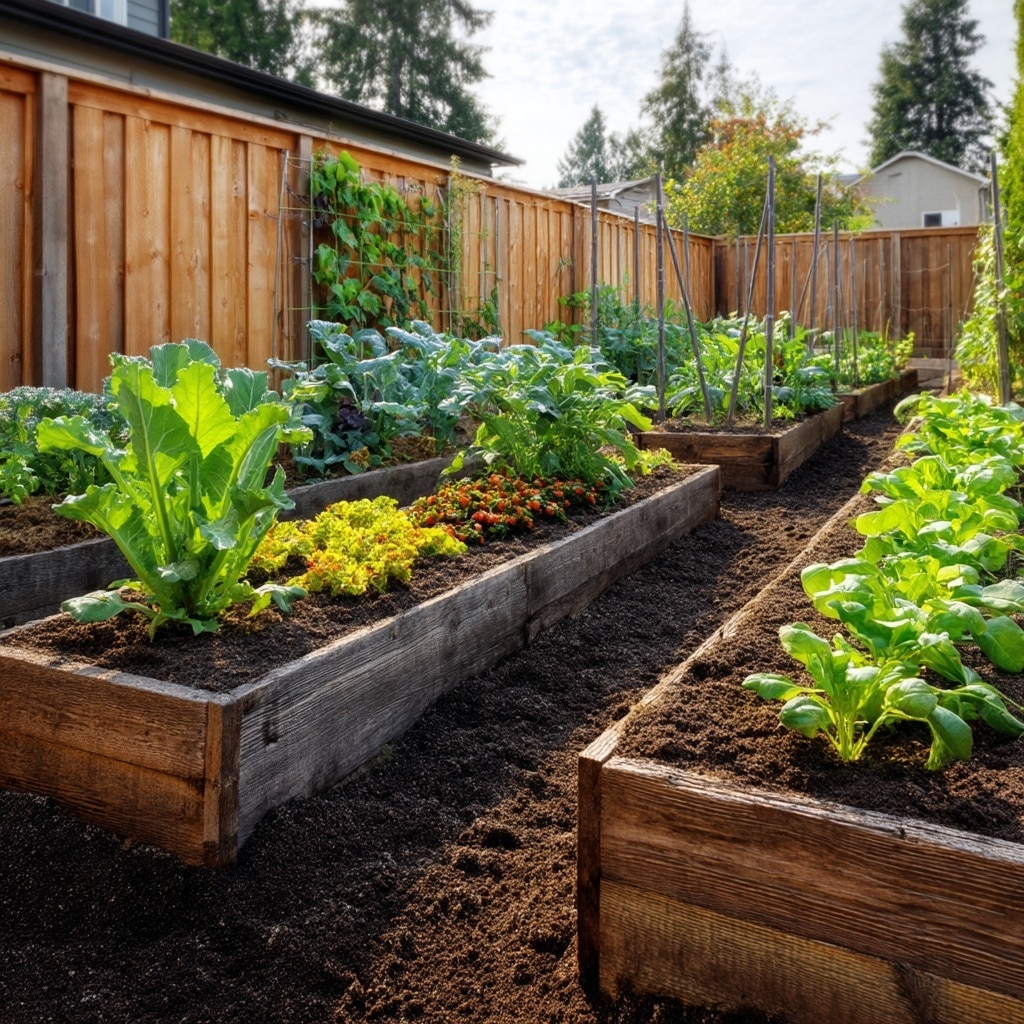
This is the simplest setup, ideal for narrow or side yards. Arrange raised beds in a straight line along a fence, path, or wall. It keeps everything accessible and makes irrigation and maintenance easy. It’s especially effective if you’re limited on space but still want to grow multiple crops.
Twin Bed Layout with Trellis

Two identical raised beds placed side by side, often joined by an overhead trellis, create a clean, symmetrical design. The trellis can support climbing plants like beans or cucumbers and also gives the garden a structured, inviting feel. This layout works well in open areas or as a focal point in your yard.
Triangular or Trio Garden Layout
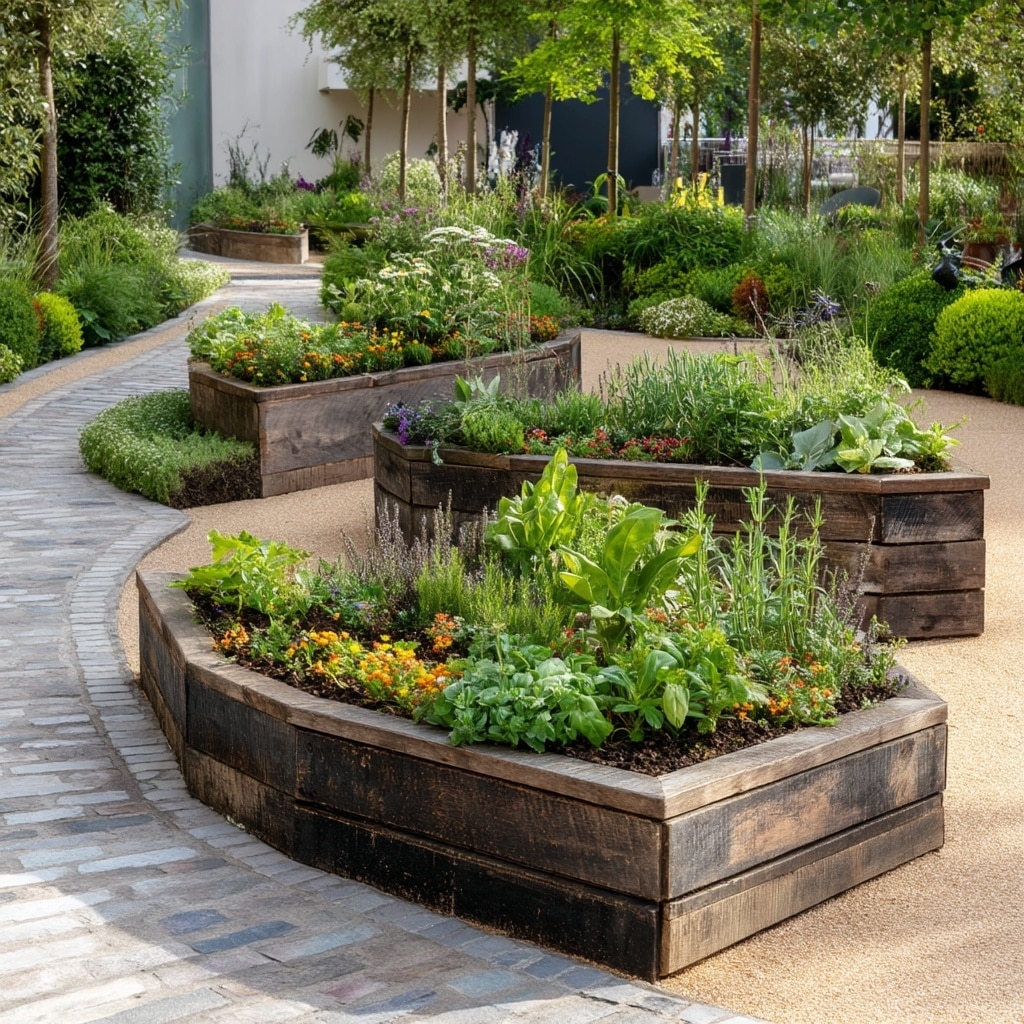
Using three raised beds arranged in a triangular or curved formation brings balance to oddly shaped spaces. It offers a pleasing visual structure while keeping each bed easy to reach. This layout is great for gardeners who want variety—use one bed for veggies, another for herbs, and the third for pollinator-friendly flowers.
Courtyard-Centered Layout
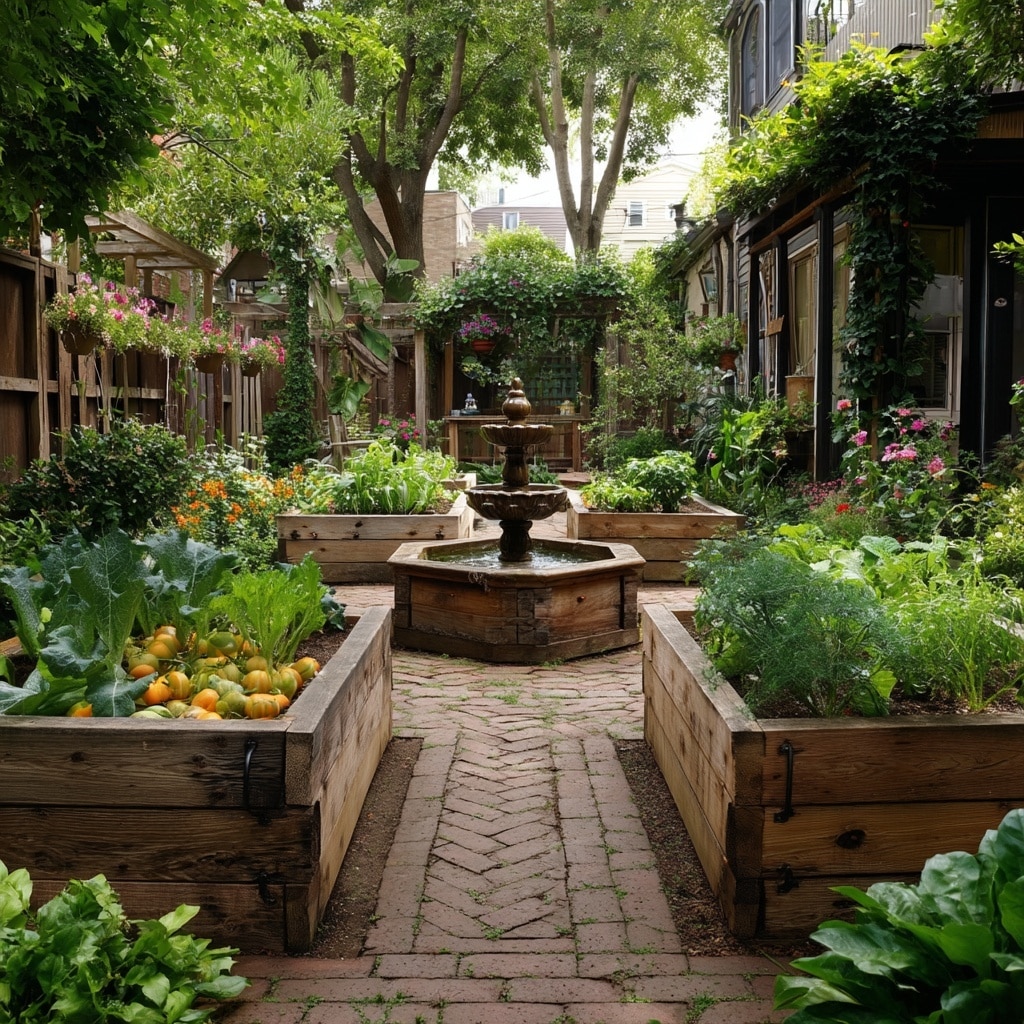
Surrounding a central space—such as a fountain, firepit, or seating area—with raised beds creates a true garden retreat. Beds can be built slightly larger to take advantage of access from multiple sides. This layout works best in larger yards where you want the garden to double as a relaxing destination.
Four-Square Raised Bed Layout

This classic layout uses four evenly sized beds placed in a grid or square. It’s perfect for crop rotation and organization—one bed for roots, one for leafy greens, one for fruiting plants, and one for soil rest or flowers. Add trellises or arches between the beds to define the space and add vertical interest.
How to Choose the Right Garden Layout for Your Space
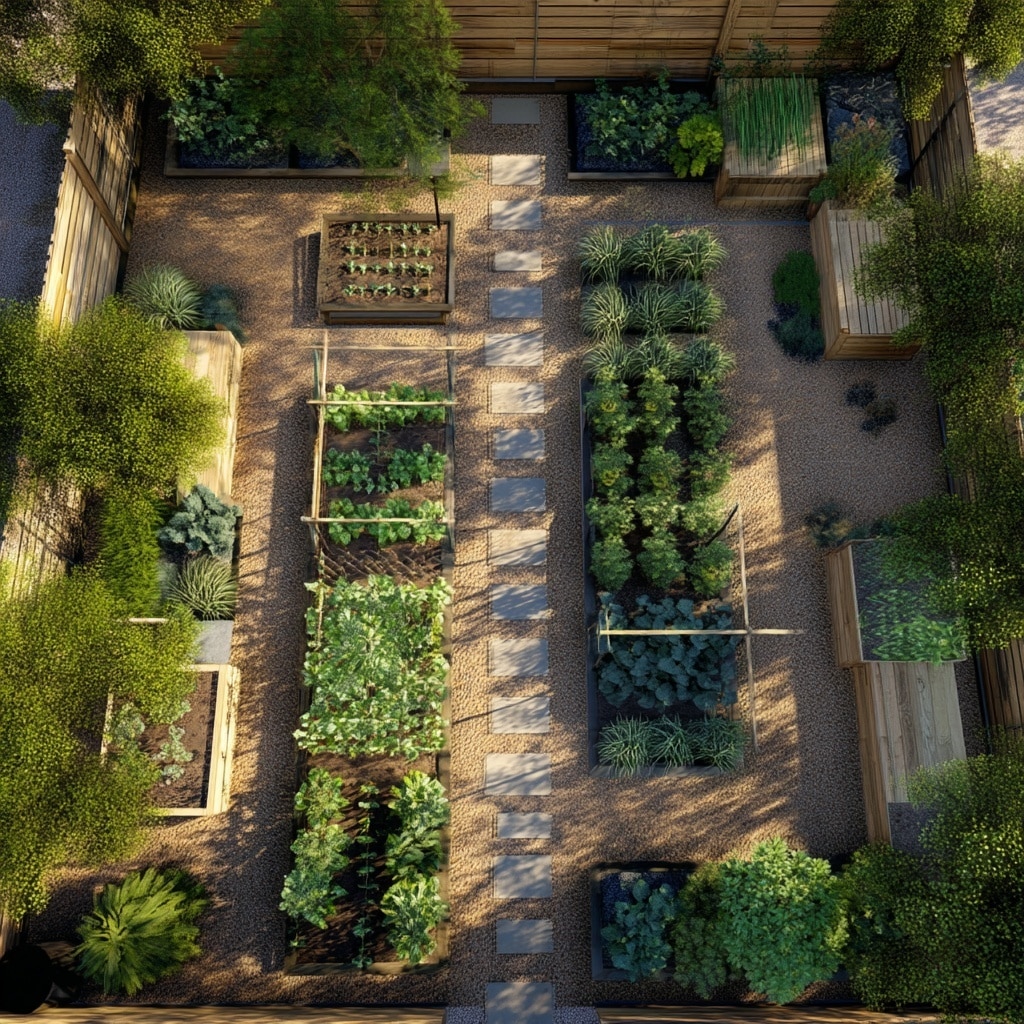
Your ideal garden layout depends on more than just aesthetics—it should support your gardening goals, match your yard’s conditions, and make daily tasks easier. Here’s how to narrow down the right configuration for your setup.
Match Your Layout to Garden Goals
Think about what you want your raised bed garden to do. Are you growing a small kitchen garden with herbs and salad greens? A simple row or twin layout might be best. If you’re aiming for a productive vegetable garden or a space that doubles as a backyard retreat, a four-square or courtyard layout can better support those goals. Function comes first—let your layout reflect how you plan to use the space.
Sunlight and Soil Considerations
Most edible plants need at least six hours of full sun daily, so choose a layout that allows all beds equal light exposure. If trees or buildings cast shade over part of your yard, use that area for plants like lettuce or kale that tolerate less light. Also, consider the natural soil underneath—if you have poor drainage or heavy clay, raised beds should be deeper and filled with quality soil to support strong root growth.
Pathways and Bed Width Matter
A smart garden layout also includes room to move. Leave at least 3 feet between raised beds for easy access with tools or a wheelbarrow. If space is limited, 18–24 inches may suffice for basic maintenance. As for the beds themselves, stick to a maximum width of 3 feet if you can only access one side. For beds you can reach from both sides, up to 4 feet is comfortable. This ensures you can plant, harvest, and care for your crops without strain.
How to Plan and Mock Up Your Garden Layout
Before you start building or ordering materials, it’s worth taking the time to map out your garden layout. Visual planning helps you spot potential issues, maximize your space, and create a layout that actually works when you’re on the ground.
Sketch Your Space First
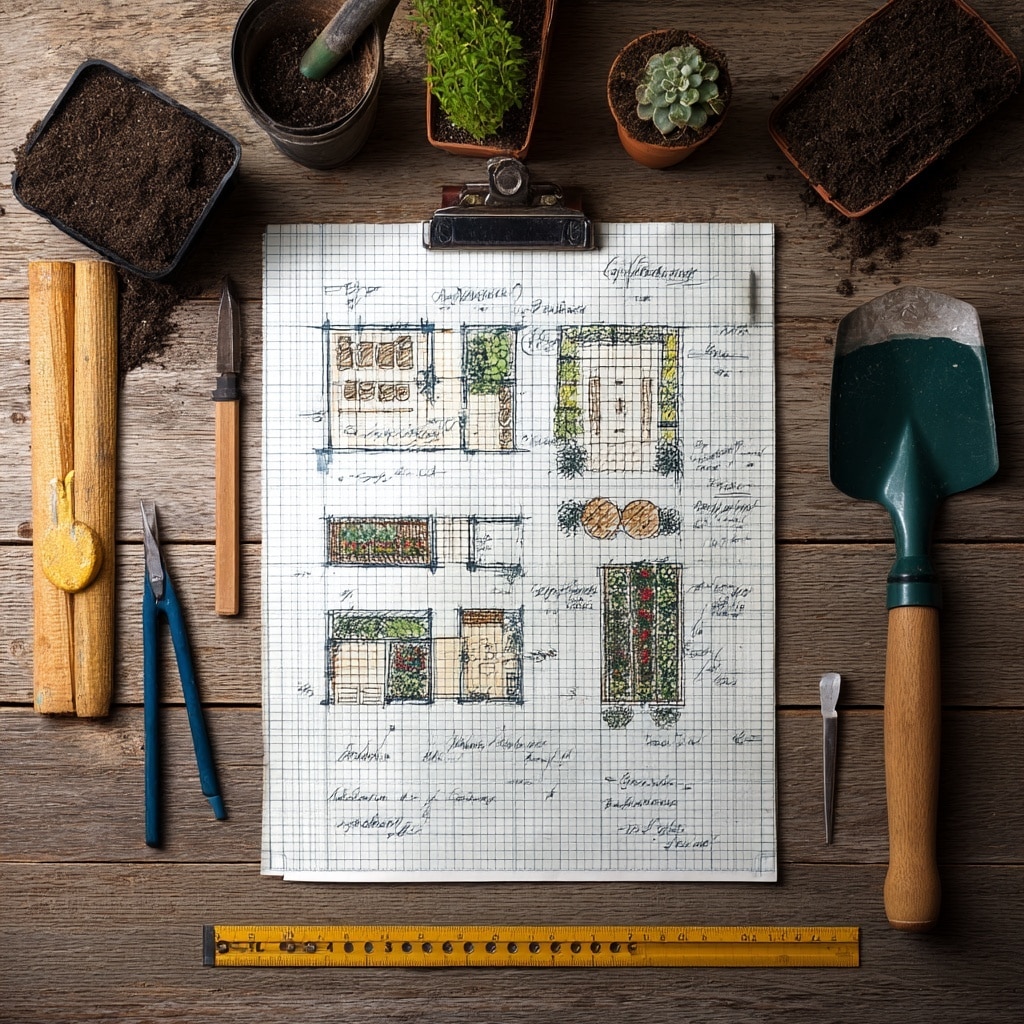
Start with a simple sketch of your garden area. You don’t need to be an artist—just use rough outlines to block out available space. Include existing elements like fences, trees, paths, and patios. Use graph paper or digital tools to scale your drawing if you want precision. Seeing your space from above gives you a clearer sense of how different layouts will fit.
Use Sheets or String to Visualize Bed Placement

Once you’ve sketched a few layout ideas, bring the plan outside. Lay down old sheets or use stakes and string to outline your potential raised beds. This physical mockup gives you a real-world feel for how much space the beds will occupy and how you’ll move between them. Walk around the mock layout to test accessibility and flow—especially for areas where you’ll be pushing a wheelbarrow or crouching to harvest.
Adjust Based on Real Movement and Flow

You might realize that what looked great on paper feels cramped or awkward in person. That’s a good thing—it’s easier to change string than to rebuild lumber. Make small adjustments, then reassess. Look for ways to improve sun exposure, simplify access, and create natural paths. This hands-on planning step ensures your garden layout is both beautiful and functional before you commit to building.
Conclusion
A well-thought-out garden layout is the foundation of a successful raised bed garden. Whether you prefer the simplicity of rows, the symmetry of twin beds, or the charm of a courtyard design, your layout should reflect both your space and your gardening style. Don’t rush the planning process—take time to sketch, mock up, and fine-tune your design. The result will be a garden that’s not only productive and easy to manage, but also a joy to spend time in. With the right layout, your raised bed garden becomes more than just a place to grow—it becomes a part of your lifestyle.



